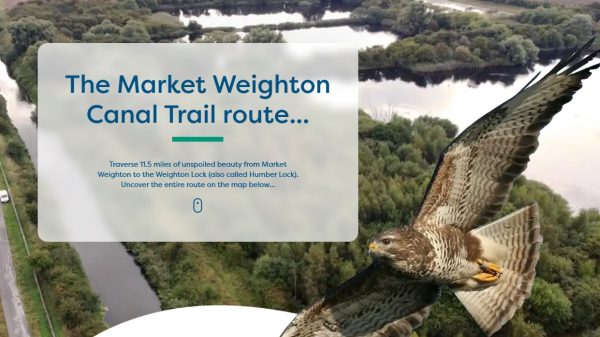About the Market Weighton Canal
The Canal was authorised by an Act of Parliament in 1772 and opened in 1782, and is partly the canalised river Foulness. It was built jointly for both navigation and drainage purposes, with the latter as its primary function, to the extent that locks were required not to hold water back above a certain height. It was originally intended to build the canal to the town of Market Weighton, but funds ran out, and the canal stopped short as further construction would have required more locks as the ground rose on the way to the town.
In 1834, a 0.75-mile private branch – the Holme Canal – was constructed from just above Holme Ing Lock (the further lock from the Humber). This was also known as Sir Edward Vavasour’s Canal after its promoter. In 1850, the Market Weighton Canal was sold to the York and North Midland Railway (later the North Eastern). The canal’s commissioners, however, remained in control, and the Holme Canal remained private. From the mid-1860s, the upper 3.5 miles of the canal and two locks were allowed to silt up owing to lack of trade, and this section was consider unnavigable by 1894. Under the Market Weighton Drainage Act 1900, the North Eastern Railway abandoned its interest, and the canal was abandoned above Sod House Lock. Traffic ceased in 1958 and in 1971, the entrance lock was abandoned in favour of electro-mechanical drainage sluices.
[The photo shows the bi-directional (tidal) lock linking the Market Weighton Canal to the Humber Estuary – by Graham Hogg – cc-by-sa/2.0 geograph.org.uk/p/6021836]


